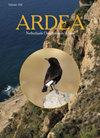亚得里亚海上游大鸬鹚饮食与鱼类资源的关系
IF 1.3
4区 生物学
Q3 ORNITHOLOGY
引用次数: 0
摘要
平衡保护问题与保护水产养殖活动的必要性推动了研究,以量化Phalacrocorax carbo大Cormorant的影响,并确定最佳缓解策略。这项研究的目的是描述饮食与大Cormorant对亚得里亚海上游弗留利-威尼斯朱利亚地区大规模水产养殖场的可能影响。通过分析2006/2007年冬季在弗留利-威尼斯朱利亚海岸线三个最重要的栖息地每月收集的459粒颗粒,对该物种的饮食进行了调查。事实证明,珊瑚虫主要以泻湖和沿海水域的典型鱼类为食。从频率上看,沙腥鱼(54%)和扁鱼(26%)是主要猎物。在生物量方面,Flounds也发挥了重要作用(35%),与mullet(Mugilidae,28%)一起。从频率和生物量来看,商业上重要的水产养殖物种(欧洲鲈鱼Dicentrarchus labrax和Gilthead Bream Sparus aurata)仅占2%和14%。饮食分析支持了我们之前的研究,这些研究是通过对不同深度觅食的Cormorants的行为观察、与主要猎物的互动以及渔场的开发策略进行的。我们的数据表明,大珊瑚对亚得里亚海北部的水产养殖产量没有太大影响。本文章由计算机程序翻译,如有差异,请以英文原文为准。
Diet of Great Cormorants Phalacrocorax carbo in Relation to Fish Resources in the Upper Adriatic Sea
The necessity of balancing conservation issues with the protection of aquaculture activities drives research to quantify the impact of the Great Cormorant Phalacrocorax carbo and to identify the best mitigation strategies. This study aims to characterise the diet in relation to the possible impact of the Great Cormorant on the extensive aquaculture farms in Friuli Venezia Giulia region in the upper Adriatic Sea. The diet of the species was investigated by analysing 459 pellets, collected monthly during the winter 2006/2007 in the three most important roosts of the Friuli Venezia Giulia coastline. Cormorants proved to feed mainly on typical fish species of lagoon and coastal waters. By frequency, Sand Smelts Atherina boyeri (54%) and Flounders Platichthys flesus (26%) were the main prey. Flounders played an important role also in terms of biomass (35%), together with mullets (Mugilidae, 28%). Commercially-important aquaculture species (European Seabass Dicentrarchus labrax and Gilthead Bream Sparus aurata) represented only 2% and 14% by frequency and biomass. The diet analysis supports our previous studies, carried out by behavioural observations on Cormorants foraging at different depths, on interactions with the main prey and strategies of exploitation of the fish farms. Our data imply that the Great Cormorant does not have a large effect on aquaculture yield in the north Adriatic Sea.
求助全文
通过发布文献求助,成功后即可免费获取论文全文。
去求助
来源期刊

Ardea
生物-鸟类学
CiteScore
2.10
自引率
0.00%
发文量
49
审稿时长
>12 weeks
期刊介绍:
Ardea is the scientific journal of the Netherlands Ornithologists'' Union, and is published since 1912. The journal welcomes manuscripts reporting significant new findings in ornithology, in particular those covering the ecology, life history, and evolution of birds, and including sound descriptive work. Ardea publishes Original research papers, Short notes and Book reviews. In addition to the regular three issues per year, Ardea publishes specials that contain conference or workshop proceedings (produced on request).
 求助内容:
求助内容: 应助结果提醒方式:
应助结果提醒方式:


